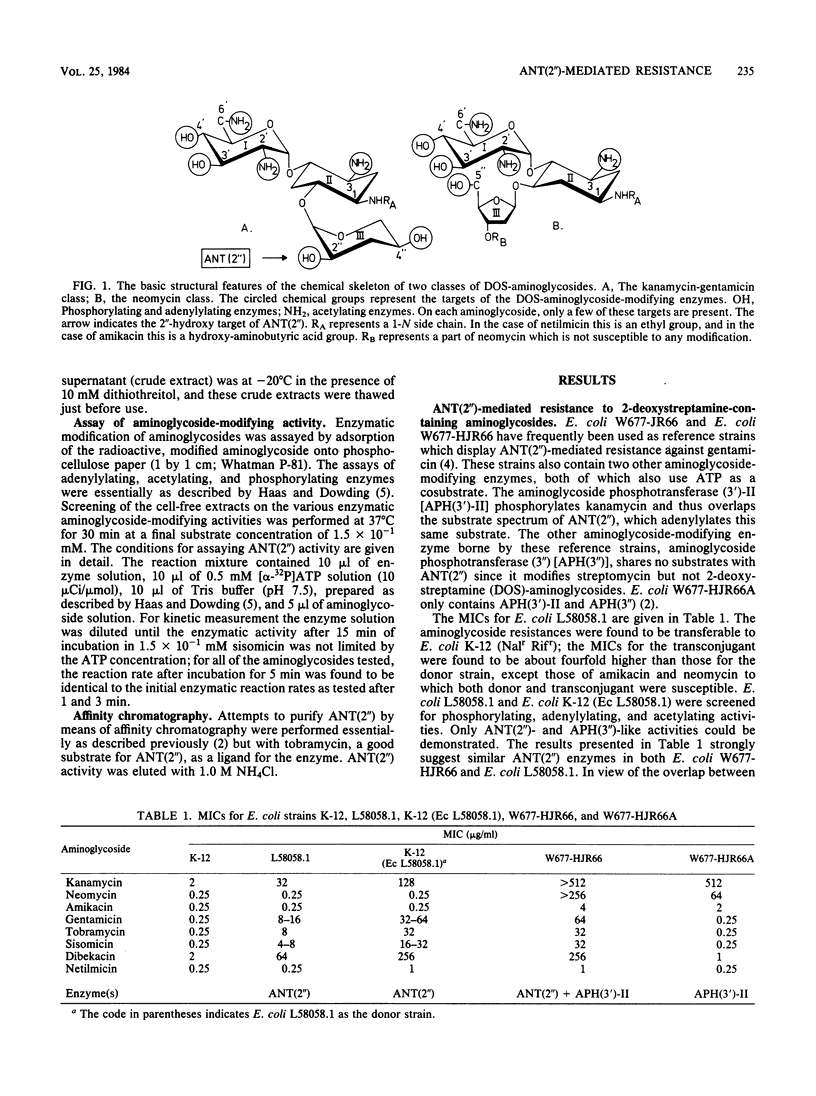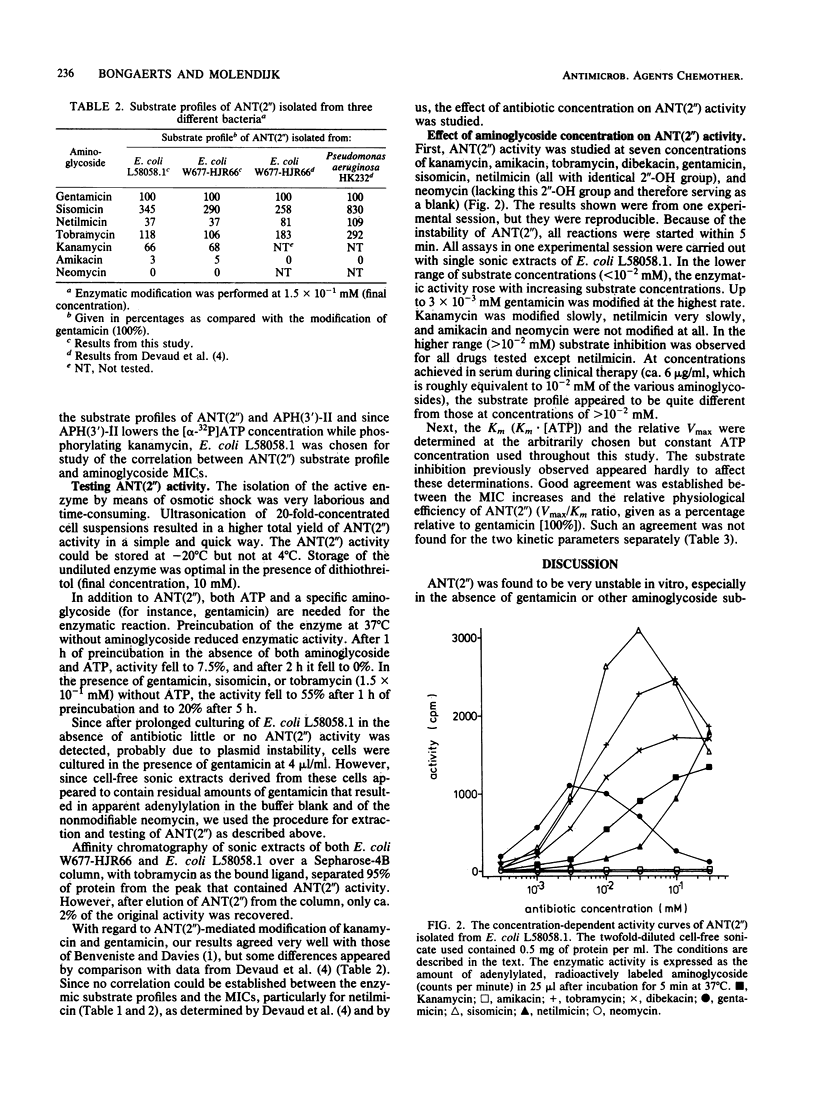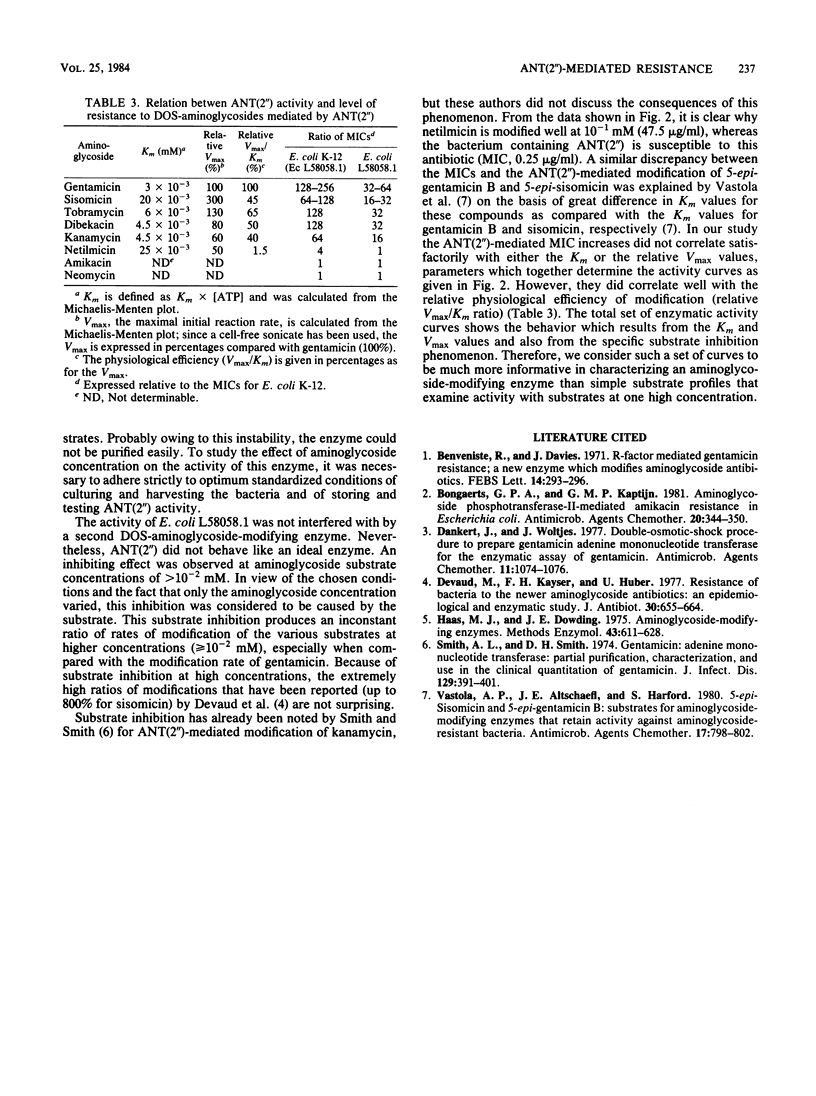Abstract
The relationship between plasmid-coded aminoglycoside 2"-O-nucleotidyltransferase [ANT(2")] activity and the minimum inhibitory concentration for aminoglycosides was studied. ANT(2") was very unstable, and therefore, procedures for handling this enzyme were optimized. Escherichia coli L58058.1 producing ANT(2") was resistant to gentamicin, sisomicin, kanamycin, tobramycin, and dibekacin but susceptible to netilmicin, amikacin, and neomycin. However, only amikacin and neomycin were not modified by ANT(2"). A correlation between the substrate profile of the enzyme tested at 0.15 mM and the minimum inhibitory concentrations of the aminoglycosides could not be demonstrated. The substrate concentration-dependent enzyme activity curves proved to be a better alternative than a substrate profile based on tests at one concentration. At concentrations of greater than 10(-2) mM, ANT(2") demonstrated substrate inhibition that explains the discrepancy between ANT(2") activity and the minimum inhibitory concentrations. A close correlation was found between the physiological efficiency (Vmax/Km ratio) of ANT(2") and the minimum inhibitory concentrations for the enzyme-producing strain.
Full text
PDF



Selected References
These references are in PubMed. This may not be the complete list of references from this article.
- Benveniste R., Davies J. R-factor mediated gentamicin resistance: A new enzyme which modifies aminoglycoside antibiotics. FEBS Lett. 1971 May 20;14(5):293–296. doi: 10.1016/0014-5793(71)80282-x. [DOI] [PubMed] [Google Scholar]
- Bongaerts G. P., Kaptijn G. M. Aminoglycoside phosphotransferase-II-mediated amikacin resistance in Escherichia coli. Antimicrob Agents Chemother. 1981 Sep;20(3):344–350. doi: 10.1128/aac.20.3.344. [DOI] [PMC free article] [PubMed] [Google Scholar]
- Dankert J., Woltjes J. Double-osmotic-shock procedure to prepare gentamicin adenine mononucleotide transferase for the enzymatic assay of gentamicin. Antimicrob Agents Chemother. 1977 Jun;11(6):1074–1076. doi: 10.1128/aac.11.6.1074. [DOI] [PMC free article] [PubMed] [Google Scholar]
- Devaud M., Kayser F. H., Huber U. Resistance of bacteria to the newer aminoglycoside antibiotics: an epidemiological and enzymatic study. J Antibiot (Tokyo) 1977 Aug;30(8):655–664. doi: 10.7164/antibiotics.30.655. [DOI] [PubMed] [Google Scholar]
- Haas M. J., Dowding J. E. Aminoglycoside-modifying enzymes. Methods Enzymol. 1975;43:611–628. doi: 10.1016/0076-6879(75)43124-x. [DOI] [PubMed] [Google Scholar]
- Smith A. L., Smith D. H. Gentamicin:adenine mononucleotide transferase: partial purification, characterization, and use in the clinical quantitation of gentamicin. J Infect Dis. 1974 Apr;129(4):391–401. doi: 10.1093/infdis/129.4.391. [DOI] [PubMed] [Google Scholar]
- Vastola A. P., Altschaefl J., Harford S. 5-epi-Sisomicin and 5-epi-Gentamicin B: substrates for aminoglycoside-modifying enzymes that retain activity against aminoglycoside-resistant bacteria. Antimicrob Agents Chemother. 1980 May;17(5):798–802. doi: 10.1128/aac.17.5.798. [DOI] [PMC free article] [PubMed] [Google Scholar]


